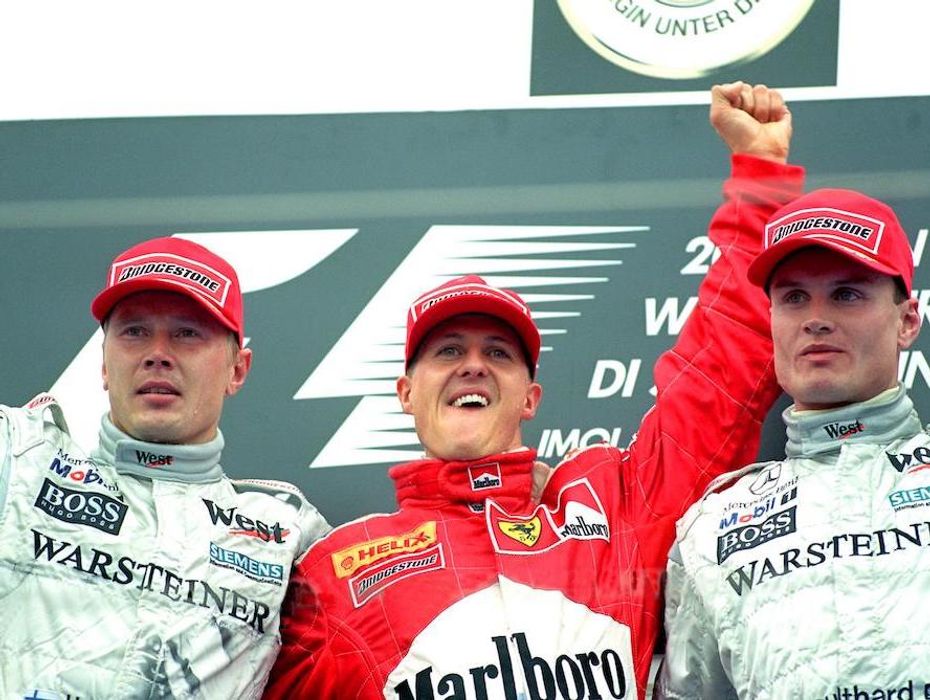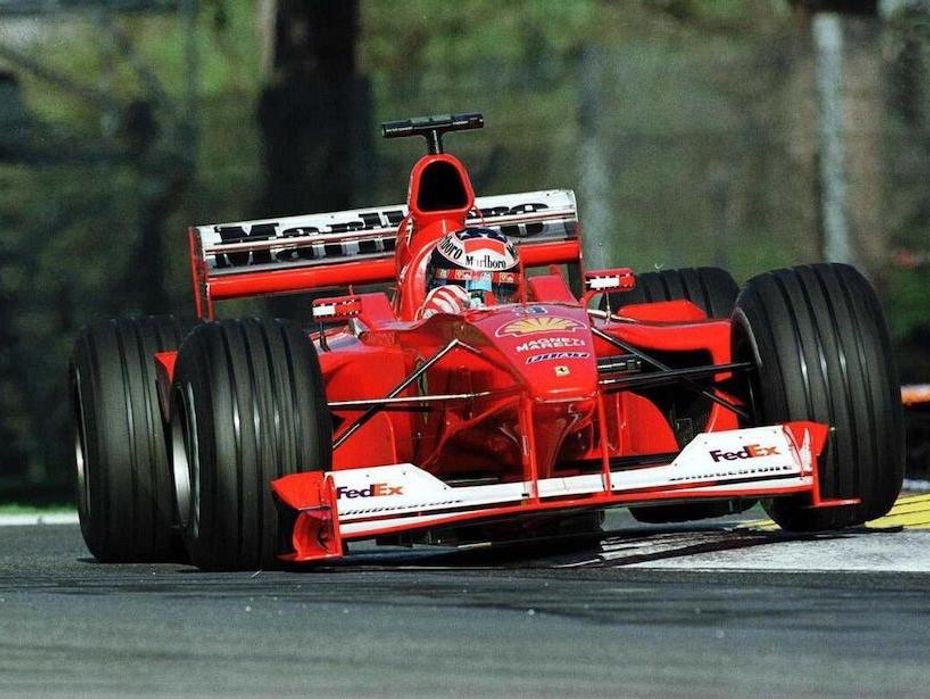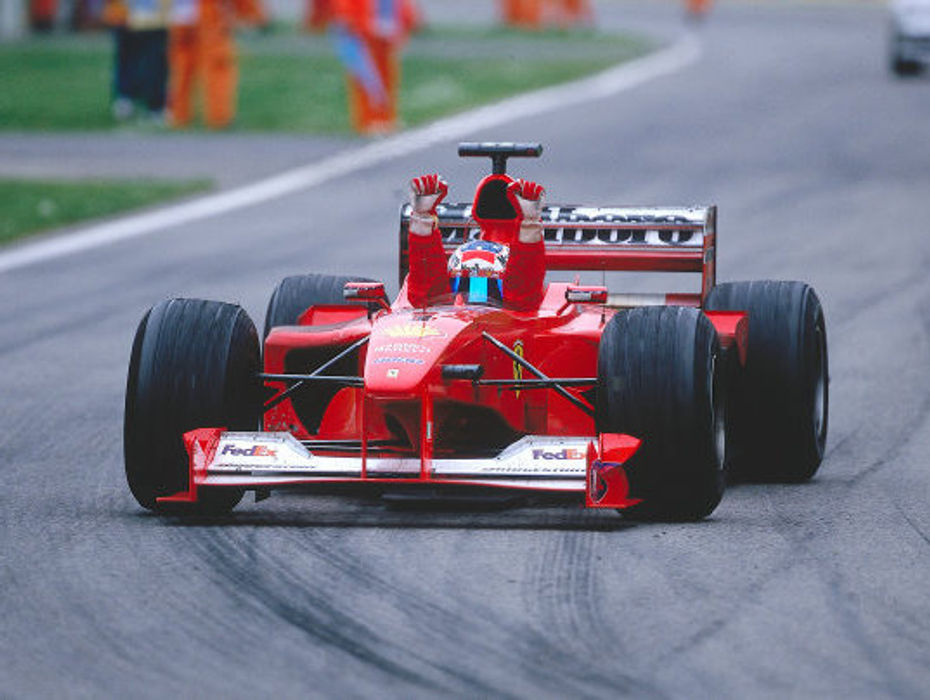
Coronavirus Update: 2020 Beijing Motor Show Postponed
- Apr 10, 2020
- Views : 7252


Since there hasn’t been any F1 racing and barely any motorsport this year – and we are close to losing it with bad news all around regarding the Coronavirus COVID-19 situation, looking back on years gone by seems like a logical way to count down the days till things get back to some level of normalcy.
We had been planning to do this series anyway, though and now is as good a time to start. Twenty years ago, Michael Schumacher finally won his third F1 world championship in his fifth year with Ferrari. It was doubly significant as it was the first time since 1979 – two years before I was even born – that a Ferrari driver had won the driver’s title.
Those who look at that season purely through the prism of statistics will say that this was the first year of Schumacher and Ferrari’s domination of F1. Those who go more into detail as well as those who remember, will recall that winning the title that year was no forgone conclusion.
Schumacher had left a successful Benetton F1 team as a double world champion at the end of the 1995 season to accept the big bucks Ferrari were willing to pay him to get their hands on that coveted world title.
In his first season with the Scuderia in 1996 – and before Ross Brawn or Rory Byrne left Benetton to join him – he won three races and scored four pole positions against the might of the Adrian Newey designed Williams-Renault. He almost won the title in 1997 but fell short and also covered himself in infamy.
Newey’s technical prowess paired with Mika Hakkinen’s talent netted McLaren-Mercedes two drivers titles. Plus, in 1999 Schumacher suffered a season ending crash in Silverstone, forcing him to miss six races.
F1 was at a crossroad at the start of the 2000 season. Hakkinen had a chance to become only the second driver in F1 history to win three straight titles. The Finn also had a chance to beat Schumacher to three titles and join the likes of Ayrton Senna, Niki Lauda, Jackie Stewart, Jack Brabham and Nelson Piquet.
The season started in the best way possible for Schumacher and Ferrari, as despite Hakkinen and teammate David Coulthard locking out the front row in both the Australian and Brazilian Grands Prix, Schumacher won both races. The Ferrari F1-2000 was fast and more importantly reliable. Both McLarens retired from the Australian GP with an engine failure. Hakkinen retired from the Brazilian GP with low oil pressure. Coulthard was beaten to victory by Schumacher using a pit stop strategy that would have the German start with less fuel but make up for time lost due to more pitstops by driving almost qualifying pace laps and come out in front.
Coulthard was disqualified from second after a front wing endplate was found to be illegal, but Ferrari and their fans knew it was very early days.

With McLaren’s reliability problems, no one knew how things would pan out over a full race distance if both Hakkinen and Coulthard made it to the finish. For the third round of the season, the venue was the Autodromo Enzo e Dino Ferrari in Imola. Hakkinen was on pole yet again, but by only 0.091 seconds from Schumacher. Coulthard and the other Ferrari of Rubens Barrichello were on the second row.
Hakkinen made a terrific start, the first of many for that 2000 season, while Schumacher struggled and almost got passed by Coulthard until he established his position by the Tamburello chicane. The race then became a straight fight between Hakkinen and Schumacher, which was fitting given how the fate of the world championship was ultimately decided.
The two pulled away from their respective teammates at a rate of a second a lap and a pattern emerged. Hakkinen did everything possible to increase his lead over Schumacher while the German did what appeared to be damage limitation and not falling entirely out of contention. After the first round of stops of the 62-lap race, Hakkinen remained in front and seemed to have the measure of Schumacher. By the time Hakkinen made his second stop, Schumacher was three seconds behind and this was when the German made his move.
Pushing his Ferrari as hard as he dared, Schumacher and Ferrari knew that his only shot at keeping the lead after he made his second stop was to go flat out, refuel with just enough to get to the end and hope for the best.
On lap 49, Schumacher dived in for a ‘splash and dash’ much to the delight of Ferrari’s adoring fans at their second home venue, he was ahead of Hakkinen. Schumacher’s lap while coming into the pits and while exiting were both much faster than the Finn’s.
Despite Hakkinen’s best efforts – he set the fastest lap of the race two laps from the end – Schumacher crossed the finish line in first place, just 1.168 seconds ahead of the Finn. Coulthard had bested Barrichello and was third, over 51 seconds behind Schumacher while Barrichello was almost a full lap behind his teammate.

On paper, the stat-heads would say it was a dominant start to the season, but the San Marino GP was anything but a foregone conclusion. Neither was the fate of the 2000 drivers championship as this was the era before testing restrictions. McLaren would respond and with the aid of engine partners Mercedes, would furiously develop the MP4/15 over the course of the season. Schumacher would go through a period where he would retire from three out of four races and trailing Hakkinen in the standings.
Overcoming the dry spell for himself and Ferrari was no cakewalk, but the struggle made that success all that sweeter. We will revisit more moments from that season.

Coronavirus Update: 2020 Beijing Motor Show Postponed

3 New Major Design Details Mahindra XUV 3XO Will Pack Over...

Tata Curvv: A Much Clearer Look At Its Interior Ahead Of Its Unveiling

Citroen Basalt vs Tata Curvv: Exterior Design Compared

10 New Features Expected In The Upcoming 2024 Mahindra XUV 3XO...

The Fronx Has Been Rebadged! Meet The Toyota Urban Cruiser Taisor,...

Here’s How Fuel Efficient The 2024 Maruti Suzuki Swift Sold In...

MG Hector And Hector Plus Blackstorm Edition Launched At Rs 21.25...

Mahindra XUV300 Facelift Teased, Gets A New Name
India's largest automotive community